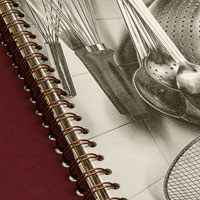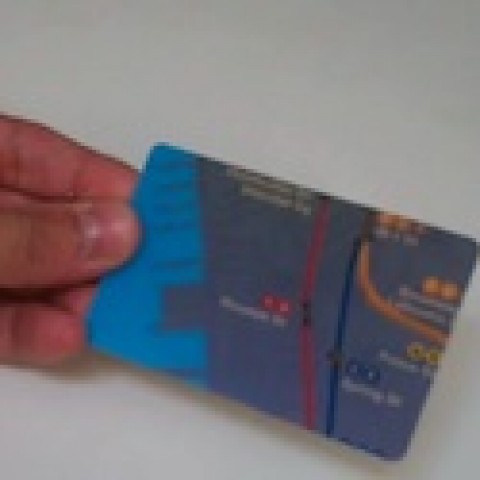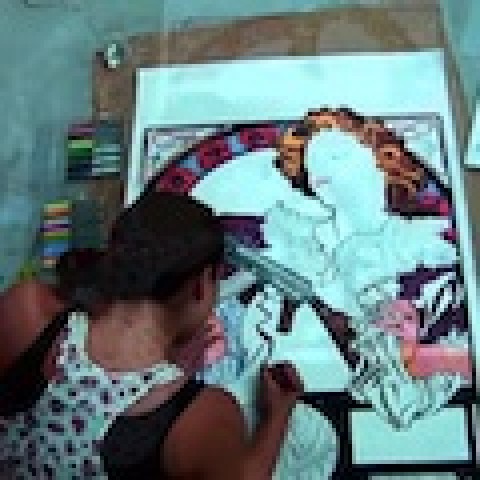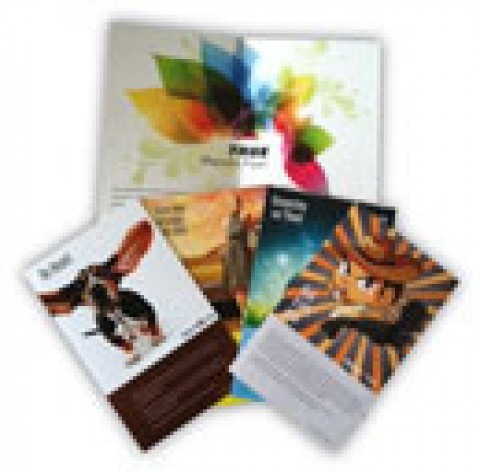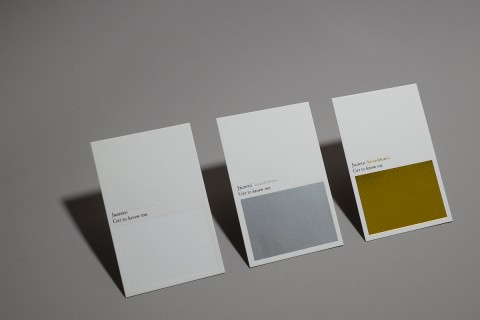During our recent free webinar “An Eye & Taste for Menu Design,” Menu Technologies principal Gregg Rapp held us all spellbound as he gave us a crash course in using menu design to boost the profits of our restaurateur clients. He also graciously agreed to answer the many, many questions you had afterward – so many in fact that we ended up splitting them into two parts.
If you missed Part 1, you can find it here. And if you want to check out the recording of that free webinar, you can do so here. Bon appetit!
C. Sconzert: Do you modify your recommendations for various ethnic restaurants? For instance, I notice that Asian restaurants have very long, dense menus.
Try and teach your customers something so they will remember you and learn these tips. Help lay the menu out for ease of ordering. Consider stepping the menu or tabs. Remember, the better it is organized, the easier on the customer.
Sarah Field: What do you do differently for a private club (country club)?
In the old private clubs they used to have menus for the host with prices, and then the guests did not see the prices – very interesting concept. Consider using member’s recipes. Sometimes it becomes political between the team and the club members. Just dig in and find out as much as you can and see it as a great opportunity!
Janna Payne: Can you talk about menu boards a bit please?
Use all the tools to build a real menu and not a price list. If you can create a handheld menu instead of the Menu Board, you will usually increase the average check. Get your clients away from the systems that create Menu Board Price Lists. The food doesn’t have as much value when you describe it.
Barry Takayesu: What things are ‘turn-offs’ in a menu?
Everyone has their own turn-offs. Remember, I am trying to teach rules and where they are from. You might want to break the rules, but know what the rule is before you break it. Add dollar signs to emphasize price. I have been knocking off leader dots and dollar signs off menus since 1982! But other things I have heard are italic typefaces (hard to read), all caps, no categories (Steaks, Seafood, Vegetarian) where you have to read all items before making a decision.
Sandra Morales: What are the best colors for a bakery business?
Very interesting thought. I don’t have an answer for you on bakery except to ask the tone of the color? Pastels? Primary? What talks to your customers? Kids? For real color information, read Leatrice Eiseman’s books! She is the Color Queen of the World!
Shelby Caret: What do you think the pros and cons are of printing paper menus compared to bound menus?
I think you are asking should the menu be in a cover or on its own. When the menu is handed to the guests, it is setting the tone of the experience. If it is a heavy book-bound menu, it adds a formality to the experience. A paper menu adds more elegance and friendliness to the experience – the paper can set the tone. The Neenah Book goes into this further but do have your Neenah rep show you the examples and the moods the papers set! I learn so much when I have been in these Neenah paper meetings!
Kristen O’Callaghan: Do you have any podcasts that you recommend on the topic in addition to books?
See the list below for books. Please check in with me, too; I am always trying to read the latest books on these subjects. Right now the Pricing Textbook is pretty dull and boring. I will add it to the list if I get enough out of it! Stay tuned!
Jennifer Buckner: Especially at micro breweries, I’ve seen recommended beer for each entree. I assume that is an effective sales tool. Correct?
Ahh…glad you asked. When we pair a beer (or wine) with an item, we will sell one glass and usually not get repeat business from this beer (or wine). When the server takes the time to find out what the guest likes, you will find a beer (or wine) that they enjoy and they will come back over and over! This is from the work of Tom Frank (a founder of PF Chang’s and Restaurant Culture Expert) and Tim Hanni’s book. Match people with beer (or wine) not items! I teach bartenders to ask questions like, “How do you drink your coffee?” and then you know if they like bold flavors or sweet and milky flavors! Find ways to help the guests to navigate into what they like. They will be back over and over! Tom Frank is the expert on getting customers back into the restaurant with his Culture Tools. Very fun stuff!
Elizabeth Dunn-Hall: What do you feel about the plastic holders [8 pages] with sheet inserts as a main menu for a family owned restaurant?
A book is tougher to navigate (8-12 pages) than a two-panel or three-panel menu. If you have to use a book, guests read it from the front to the back. We build it with the best items up front. And when it comes to plastic sleeves, you just have to look at the concept and what feels best. Plastic isn’t the best feel for a fine dining restaurant, of course. Neither are pictures. Always try and match the menu to the concept. Let me also mention the menu cover art. It should NOT have a picture of food that you want to sell. Use the cover as the “Welcome” and set the tone and the mood. This is a place for the art director to shine; save the selling for the inside.
Colleen Sisler: Can you briefly talk about the bar? I hate that you had to skip it. That was the main thing I was hoping to hear. THANKS!
I have a two-hour “Engineering the Bar Menu Program.” As you can see from the slides we did not go over, 70% of the bar customers don’t know what they are going to drink. This is huge! And only a certain percentage will look at the bar menu. Use cues to help sell. Thirty-six bottles of Grey Goose Vodka on the shelf sets the tone. You don’t ask, “What beers do you have?” Remember to help your restaurant clients with ideas beyond the menu. Look for ways to add cues. Steak sauce is a cue for steaks when it is left on the table. Ketchup is a cue for burgers when left on the table.
Violeta Archer: Organic food – are you seeing restaurateurs moving along with this demand?
Yes, I attended the Harvard/Culinary Institute of America’s “Menus of Change” this past June. They are bringing the larger clients and farmers together, and organics. Check out their website: MenusofChange.org.
One more thought: Let’s run the menu engineering on your design firm! We can make cards on each project and see where your Stars, Puzzles, Plowhorses and Dog lie! Web pages, annual reports, logo design, brochure design – it would be fun to look at your design projects as we do restaurant entrees. Then look at the add-on items we might be missing. Let me know if you are interested and we can run the analysis. Remember, you can use this system for EVERY ONE of your clients! I have had fun helping all kinds of businesses…even the funeral business. Let’s Talk Menus!
Hope this helps, everyone! Thanks for hanging out with us. And again, please thank Neenah when you meet up with them along the way!
References
- Chan, Kim W. Blue Ocean Strategy: How to Create Uncontested Market Space and Make Competition Irrelevant.
- Wansink, Brian, PhD. Mindless Eating: Why We Eat More than We Think. (Cornell Food Psychology Expert)
- Underhill, Paco. Why We Buy: The Science of Shopping.
….

From The Today Show to The Washington Post, his expertise has been sought out and featured in high-profile print and broadcast media.

